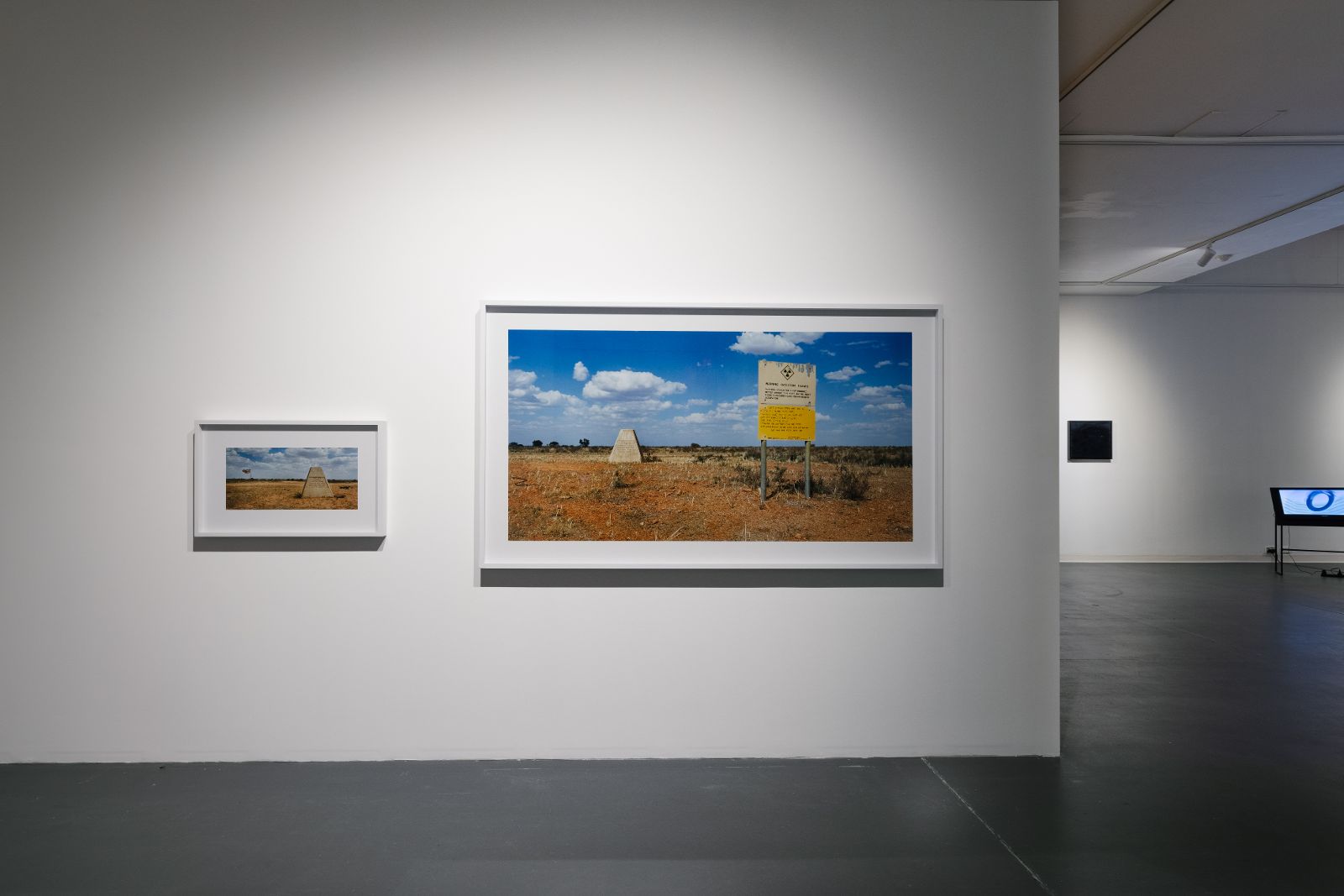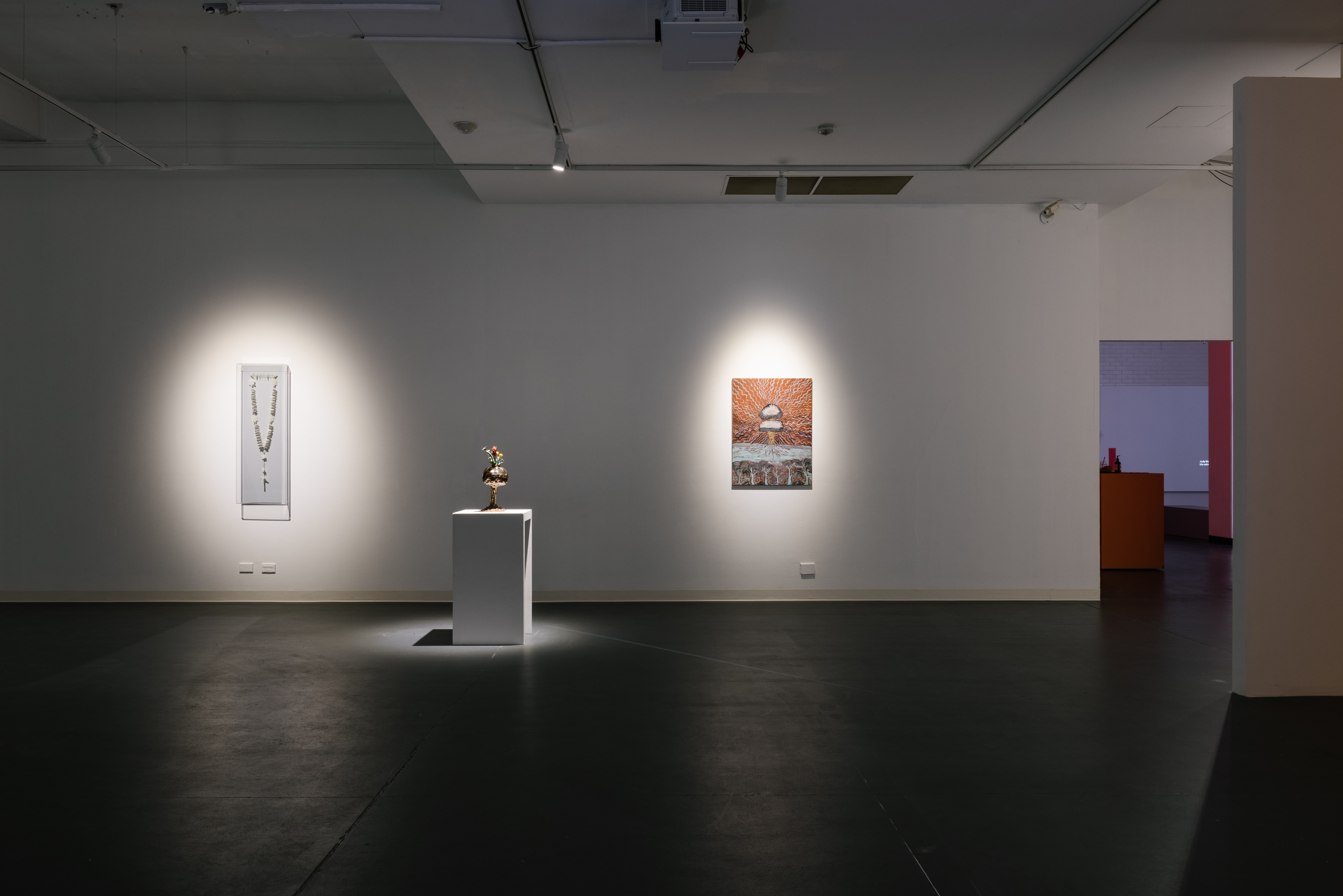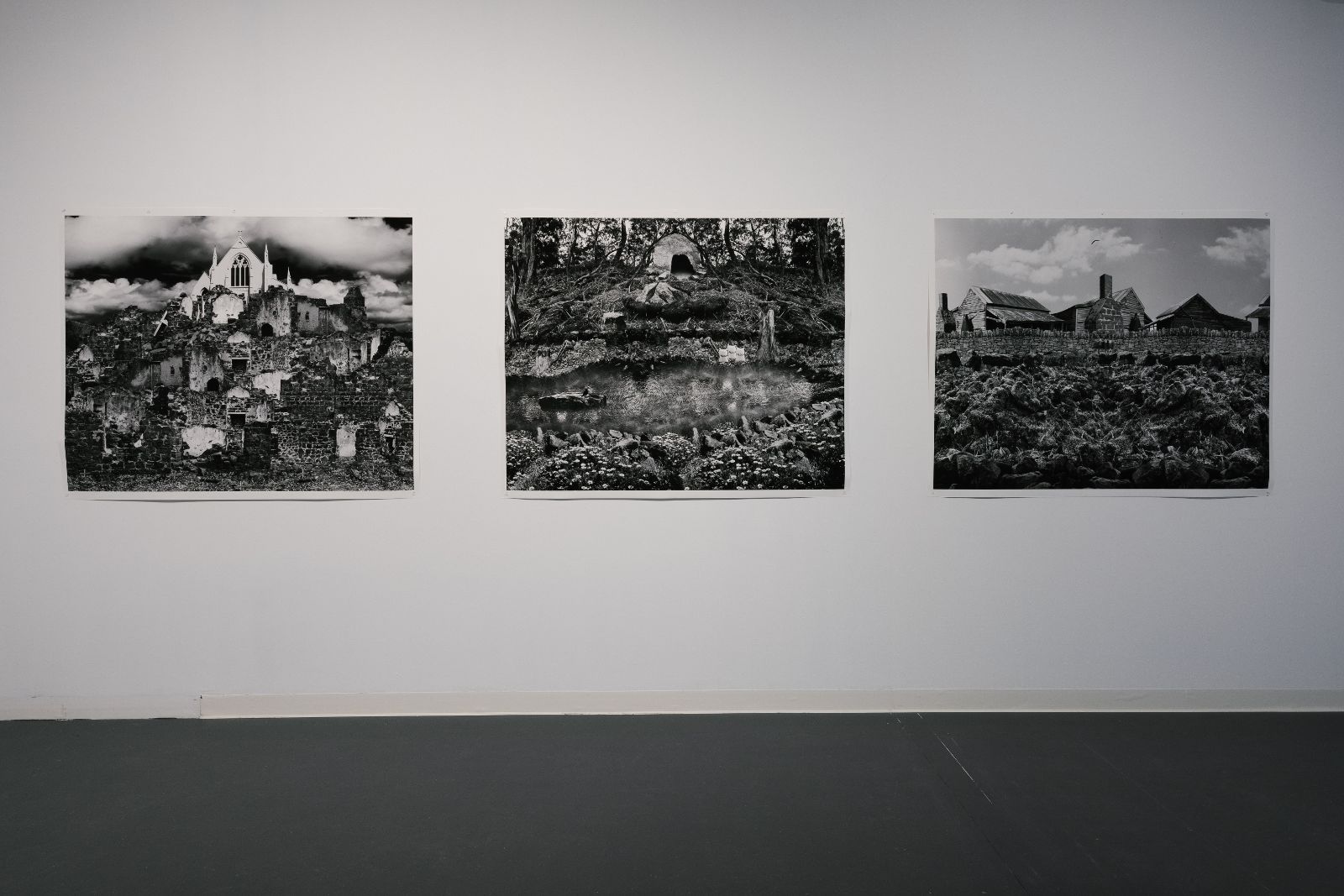.jpg)
The impact of The Image is not Nothing exhibition is revealed slowly through immersion, like a baptism of meaning. For me, the deep impact was the continued love of place that continues deep within, despite the brutality and harsh reality of genocide and environmental murder.
At first this exhibition is sparse in its physical existence. As I enter the gallery I am aware of indefinite space within the walls, despite knowing large stories of humankind are being exhibited here. It is a moment of juxtaposed sensory unsureness, an uncertainty within my heart to render myself as a freelance witness to the cruelty of man.

In the foyer I am captured by the visual work of Phil Collins, his 1991 footage first unfolding as an insight into the Albanian children living in the refugee camps, their faces revealing an uncertain surety of survival, a reluctance to smile, their bodies thin inside ill-fitting clothes. Almost spellbound I remain seated as more footage reels feature an elderly mother in Kosovo retelling the kidnap and brutal slaying of her 40-year-old son in a genocidal attack, and the hope she and his father held for his survival until, five years later, the evidence of his death was finally revealed to them. There is a sigh in her telling from deep within. It stays inside you as the immersion begins.
Five huge video screens dominate the gallery spaces. As one wanders and wonders, the screens alternate their visual presence, spilling the moving pictures into stark being, the riveting footage affecting in its revelation. I know this is a brave space, that the topics here are harrowing. Curated by Yhonnie Scarce (Kokatha) and Lisa Radford (Australia), this exhibition is the result of a shared journey between the curators, who travelled to sites of genocide — both environmental and human impact memorialisations.
I have known Yhonnie's work from before; our families are known to each other. Yhonnie is committed to the telling the truth of nuclear testing in Australia at Maralinga and Emu Field, reclaiming the dialogue and giving voice to the unknown — that the majority of continent Australia was poisoned by nuclear fallout, proven by scientists who stole the bones from bodies across Australia to test for strontium. Two stark photographs taken at a testing site near Maralinga line the wall between the foyer and gallery, as if guiding one into truth. When one peers into the photograph the image of a large concrete block that is focal reads Test Site Totem 1 A British Atomic Weapon Was Test Exploded Here On 27 Oct 1953. In the background a flagpole holds the flag of the antihero: Great Britain. These scenes are always hard to witness; my mother was born out here so this story always hits home hard. The Walpa (Wind) Bulga (Big) Maralinga painting by Kumanara Boogar portrays the fracturing that occurred over this country.

Art is the perfect medium to explore any evidence of beauty in atrocity. On a plinth nearby, a small ceramic artwork captures my eye. Created by Pam Diment from Ceduna, the vase is a replica of the mushroom-shaped cloud that erupted into the sky upon the nuclear weapon’s detonation. This vase is both pretty and peculiar; inside it holds beautiful ceramic versions of wildflowers that bloom in the red desert sand — Sturt's desert pea, the everlasting paper daisies, tansy and kampurampa (bush tomato) flowers — whilst the power-ball of the atmospheric cloud is repeated in strength by the unfurling mist that creeps over the ground. Further along, other ceramic works by eBay (Warren Paul) from Yalata extend the bomb theme, larger clay 'clouds' abnormal and audacious in their presence. Unmistakably ceramic replicas of the bomb, these pieces have been carved to symbolise (a) the swirling of energy to portray the equivalence of clouded trauma, and (b) the intricate patterns of the human brain, layer upon layer of realisation and thought as an intricate statement of mental capacity, to acknowledge the personal premise of truth, to know justice is required here. For me it informs that where justice does not occur, there is always a cost to the human condition.
Sculpture is one of my favourite art forms and I gravitate toward an enticing installation by Megan Cope titled Mourning For Menindee. It is a nest of emu eggs arranged upon cotton feathers on dry clay, reminiscent of that region’s dry riverbeds caused by the corruption and greed of governments who have sold the water for agriculture over environmental considerations and rights. Decals on the eggs remind me of fire, the furnace used by traditional owners since creation, the oldest continuum on this planet. I recognise the signature frames of the Unbound Collective, the archival research artworks from a dynamic group of women researchers who reside in Adelaide on Kaurna yarta. Four cane skirts are set there, in an instillation of promise. Close inspection shows the archival words remain, printed on potentially stolen stories. The words pound. Truth is a varying occurrence, as time flits and shatters on the video screen above, refracting the light to imply both courage and commitment to reclaim.

Shadow. Always there is a shadow. Nuclear Rosary - White Sunday by Niki Hastings-McFall is a long rosary of white plastic flowers leading downward to a crucifix, the image of Jesus as the icon of redemption. It is the shadow cast by the lighting that I find more auspicious; the darkness cast by the softness of every individual piece is a statement that even by choice, distance or an ignorance of events, there is always an intentionally entwined shadow. Beckoning from the rear of the gallery are three large photographic stills by Hayley Millar Baker. Untitled (So he mixed arsenic with half the flour and a raging thirst was created) is harrowing in its ironic title, a common story across this country if you know Aboriginal history in its truest telling. The echo of the nearby crucifix, the communion of the body and blood of Jesus Christ, seems privileged here. Truth dictates unapologetically that the body and blood of so many people have been brutally disrespected by those who claim to be pious. The videos Rainbow's Gravity by Mareike Bernien and Kerstin Schroedinger and Reflecting Absence by Korpsy/Loeffler repeat via the strong acoustic of accent that holocaust is an international occurrence. It occurs here and also there.
On my return to the foyer, the last screen on loop plays the short video piece by Waanyi multi-media artist Judy Watson. It is titled The Witness Tree and is a reminder that nature will always be the witness to the human race’s environmental destruction and idiocy. A white cockatoo glides silently, angelic, as raindrops pattern the sky. The camera zooms to the texture of trees, sap as blood, bleeding, scarring. It is the gentlest visual here, yet powerful in the witnessing of tragedy. This is the invitation to pause, to reimagine.
.jpg)












